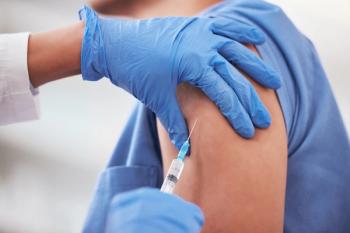
ADA 2010: Blood-pressure target for high-risk type 2 diabetics still an open question
At 5 years? follow-up, intensive blood-pressure reduction to a target systolic blood pressure (SBP) less than 120 mm Hg did not reduce the risk of a composite cardiovascular outcome, compared with a target SBP of less than 140 mm Hg in patients with type 2 diabetes at high risk of cardiovascular events, although it did reduce the incidence of stroke, said William Cushman, MD, who presented the results from the blood pressure portion of the ACCORD (Action to Control Cardiovascular Risk in Diabetes) study to a gathering at the 70th Scientific Sessions of the American Diabetes Association in Orlando, Fla.
At 5 years’ follow-up, intensive blood-pressure reduction to a target systolic blood pressure (SBP) less than 120 mm Hg did not reduce the risk of a composite cardiovascular outcome, compared with a target SBP of less than 140 mm Hg in patients with type 2 diabetes at high risk of cardiovascular events, although it did reduce the incidence of stroke, said William Cushman, MD, who presented the results from the blood pressure portion of the ACCORD (Action to Control Cardiovascular Risk in Diabetes) study to a gathering at the 70th Scientific Sessions of the American Diabetes Association in Orlando, Fla.
In the study, patients randomized to intensive blood-pressure lowering who achieved a mean SBP of 119 mm Hg had a 41% reduction in the incidence of stroke compared with those patients with type 2 diabetes who achieved a mean SBP of 134 mm Hg. Nevertheless, because strokes were relatively infrequent in ACCORD, a strategy of intensive blood-pressure lowering in patients with type 2 diabetes at high risk of cardiovascular events cannot be recommended at this time.
A total of 4,733 patients were randomized into the ACCORD blood pressure trial.
There were 208 cardiovascular events in the intensive blood-pressure-lowering group compared with 237 in the standard-treatment group. The composite event rate included nonfatal heart attack, nonfatal stroke, or cardiovascular death.
The reason for the lack of effect of intensive blood-pressure lowering on the composite cardiovascular endpoint was the low total-event rate in the study, said Cushman, chief of hypertension, Memphis Veterans Affairs Medical Center and professor of medicine and preventive medicine, University of Tennessee. "We predicted that the standard group would have an event rate of 4% per year, but they had an event rate of only 2% per year," he said. He speculated that high use of statins and aspirin in the standard target group might explain the less-than-expected event rate in this group.
In the intensive blood-pressure-lowering group, there was no subgroup that had adverse outcomes, Cushman said, but adverse effects were more frequent in this group, an outcome that could be partly explained by the greater number of drugs needed to achieve the lower SBP target.
Newsletter
Pharmacy practice is always changing. Stay ahead of the curve with the Drug Topics newsletter and get the latest drug information, industry trends, and patient care tips.




































































































































